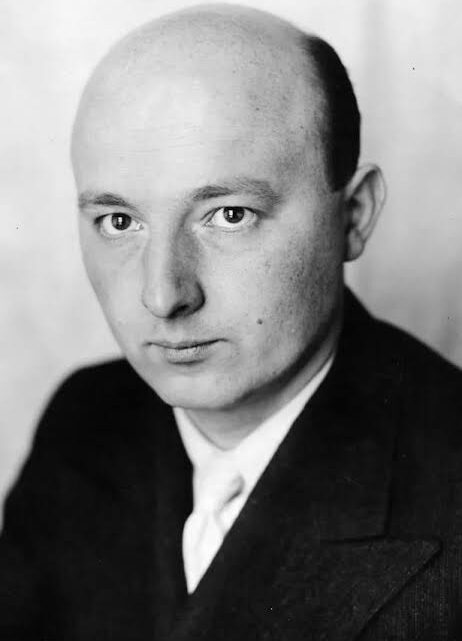
Oskar Fischinger Biography: Google Doodle Game, Death, Cause of Death, Wikipedia, Age, Net Worth, Wikipedia, Nationality
Oskar Fischinger is widely regarded as a pioneer of abstract animation, creating mesmerizing visual symphonies that merged motion and music long before the advent of computer graphics or music videos.
Born on June 22, 1900, in Gelnhausen, Germany, Fischinger initially pursued engineering, but his artistic inclinations led him to experiment with “visual music,” a groundbreaking concept at the time.
Trending Now!!:
He gained notable recognition for his contributions to early sci-fi films like Fritz Lang’s Woman in the Moon (1929), where his innovative special effects enhanced the cosmic themes of the film.

Profile
- Full name: Oskar Wilhelm Fischinger
- Date of birth: June 22, 1900
- Age as of 2024: 124 years (if alive)
- Gender: Male
- Place of birth: Gelnhausen, Germany
- Nationality: German-American
- Profession: Animator, filmmaker, painter
- Height: N/A
- Parents: N/A
- Siblings: N/A
- Spouse: Elfriede Fischinger
- Children: N/A
- Relationship status: Married
- Religion: N/A
- Ethnicity: Caucasian
- Net worth: $20k
Early Life and Education
Oskar Fischinger was born on June 22, 1900, in Gelnhausen, Germany. His early life unfolded amid the cultural tensions of early 20th-century Germany. Initially, Fischinger pursued studies in engineering, moving to Frankfurt in his teens to train in architectural drafting and tool design—skills that later proved invaluable in his animation work.
Although details of his family background and religious beliefs remain limited, Fischinger’s interest in music, particularly the violin and organ-building, reflects the blend of art and precision that defined his future creative endeavors.
Around 1920, while in Frankfurt, he met Dr. Bernhard Diebold, a film critic who encouraged him to explore film as a medium. This encounter profoundly influenced Fischinger, who soon devoted his career to creating “absolute cinema,” a style of non-narrative film integrating visual art and music.
Personal Life
In the 1920s, Oskar Fischinger married Elfriede Fischinger, who became his lifelong companion and collaborator. The couple moved to the United States in the mid-1930s, escaping the oppressive Nazi regime.
While Fischinger’s work was largely unrecognized in mainstream circles, Elfriede remained a steadfast supporter of his artistic vision. Together, they engaged with the German émigré community in Los Angeles. Although little is known about his children or extended family, his marriage to Elfriede stands as a central aspect of his personal history.
Career
Fischinger’s career began with experimental short films in Germany, where he developed innovative techniques such as wax slicing and geometric animations set to music. However, during the rise of Nazi power, his work was censored and labeled “degenerate art,” prompting him to move to the United States in 1936.
In Hollywood, Fischinger worked with major studios like Paramount and MGM, though his artistic vision often clashed with commercial demands. His piece An Optical Poem (1938), synchronized to Franz Liszt’s music, is a testament to his ability to translate complex music into visual motion. He also contributed to Disney’s Fantasia, designing abstract segments that were later altered to suit a more representational style.
Frustrated by these limitations, Fischinger increasingly turned to painting in his later years and even invented the Lumigraph, a visual instrument, in the late 1940s.
Awards
- Grand Prix, Brussels International Experimental Film Competition, for Motion Painting No. 1 (1949)
Net Worth
Oskar Fischinger’s net worth was estimated at $20k, reflecting the niche nature of his work. His career was supported primarily by grants and awards, including those from the Guggenheim Foundation, which recognized his contributions to experimental film and animation. Most of his income came from freelance animation, commissioned projects, and limited Hollywood ventures, though his films were not commercially lucrative.
Death
Oskar Fischinger passed away on January 31, 1967, in Los Angeles, California. His later years were marked by frustration with the commercial film industry, leading him to focus on oil painting and personal creative projects. Fischinger’s legacy was later revived and celebrated, securing his place as a visionary artist in the field of abstract animation.
Controversy
While Fischinger’s career was free of personal scandals, he faced significant professional challenges and ideological conflicts, particularly in Hollywood.
- At Paramount Studios, he created Allegretto, a color-synchronized short intended for The Big Broadcast of 1937. Paramount’s decision to release it in black-and-white contradicted his vision, leading to his departure.
- During his time at Walt Disney Studios, Fischinger worked on Fantasia and designed a sequence for Toccata and Fugue in D Minor. Disney’s preference for a more literal interpretation of the piece led Fischinger to leave the project in frustration.
- In Nazi Germany, Fischinger’s abstract films were banned as “degenerate art,” further complicating his career.
Despite these struggles, Fischinger’s persistence in maintaining his artistic integrity set a standard for avant-garde cinema. His influence is evident in modern visual music and experimental animation.
Social Media
- Instagram: N/A
- Twitter: N/A
Filmography
- Woman in the Moon (1929)
- An Optical Poem (1938)
- Motion Painting No. 1 (1947)
NOTICE!! NOTICE!! NOTICE!!
DISCLAIMER!! : Every Biography and Content Published On TheCityCeleb are For Knowledge Reason. Don't Hesitate to Reach Out for Any Correction || Suggestion || Copyright!!CORRECT@thecityceleb.com


